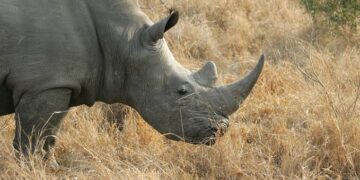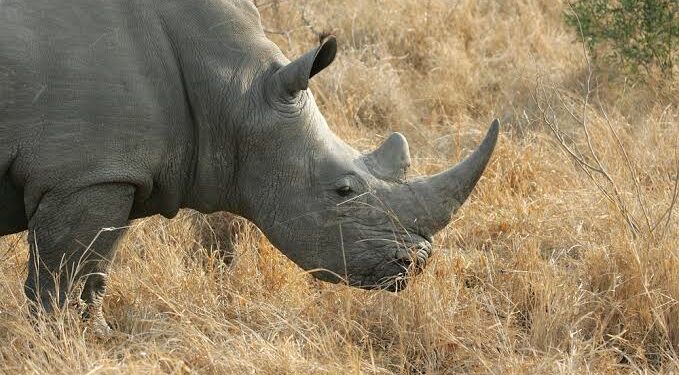By Emmanuel Nduka
South Africa has reported a notable 16% decline in rhino poaching, with 420 rhinos killed for their horns in 2024, down from 499 the previous year, according to the country’s environment ministry.
The reduction is partially credited to the ongoing dehorning initiative in KwaZulu-Natal, a region previously plagued by poaching activities.
Despite this progress, Environment Minister Dion George raised alarms over an unsettling trend at the iconic Kruger National Park, where rhino killings rose from 78 in 2023 to 88 in 2024.
The park’s vast, remote terrain presents significant challenges for law enforcement, leaving conservationists grappling with persistent threats to rhino populations.
Home to nearly half of Africa’s critically endangered black rhino population and the largest number of white rhinos globally, South Africa plays a crucial role in rhino conservation.
Rhino horns, composed of keratin (the same substance found in human hair and nails), remain highly sought after, particularly in East Asia, where they are used in traditional medicine and jewelry.
In response, the government has ramped up security measures, including lie-detector tests for staff at key poaching hotspots like Kruger and Hluhluwe-iMfolozi parks.
However, the poaching crisis extends beyond South Africa’s borders.
Neighboring Namibia also witnessed a disturbing uptick in rhino poaching in 2024, with cases increasing from 69 to 83, underscoring the ongoing peril facing these endangered species.


































